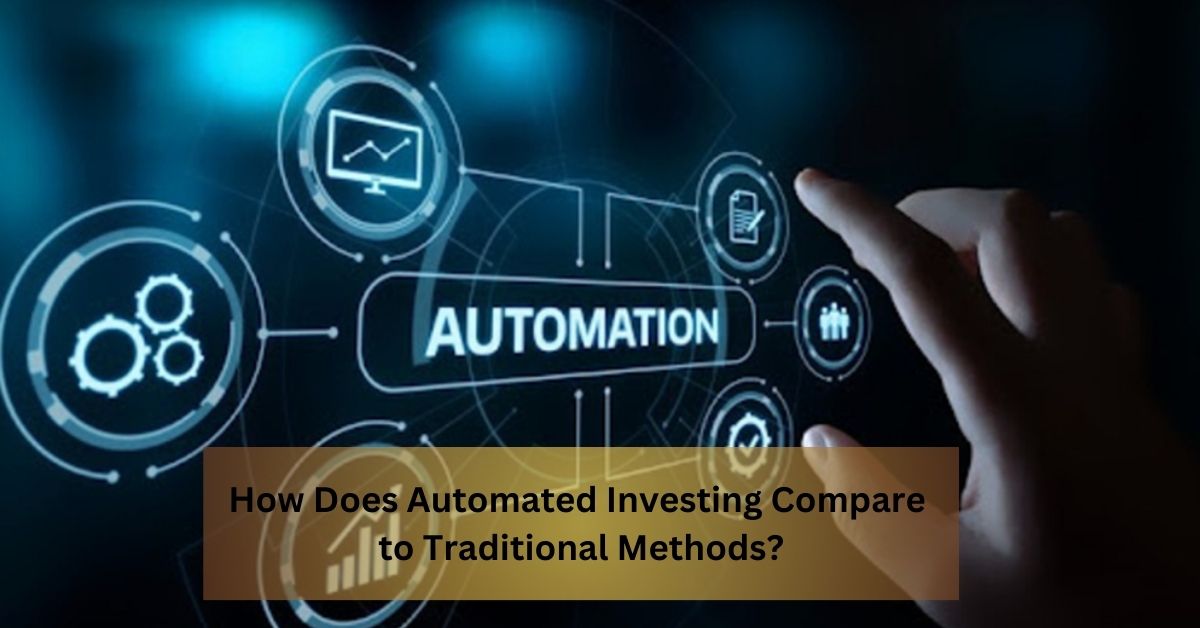Investing is fundamental to building wealth and securing one’s financial future. As technology continues to reshape the financial landscape, the debate between automated investing, often referred to as robo-investing, and traditional methods has gained prominence. This article compares automated investing and traditional methods to help investors make informed decisions.
Diversification and Portfolio Management
One of the key advantages of automated investing is its ability to provide diversified portfolios effortlessly. Robo-advisors use algorithms to create well-balanced portfolios tailored to an individual’s risk tolerance and financial goals. This diversification across various asset classes and sectors can help mitigate risk.
Traditional methods often require investors to select and manage their investments manually. While this approach offers greater control, it may lead to less diversified portfolios if not done diligently. Automated investing’s systematic approach can simplify diversification, making it accessible to a broader audience.
Cost-Effectiveness
Cost is a critical factor for investors. Robo-investing often comes with lower fees compared to traditional methods. Automated platforms typically charge lower management fees since they rely on algorithms rather than human advisors. This cost-effectiveness can translate into higher returns over time.
Traditional methods may involve higher fees, including advisory fees, commissions, and account management fees. While some investors value the personalized advice human advisors provide, the cost difference can erode returns, especially for long-term investors.
Accessibility and Convenience
Automated investing offers unparalleled accessibility and convenience. Investors can set up robo-advisor accounts quickly and easily. These platforms provide 24/7 access to portfolio information and performance. Additionally, automated investing eliminates face-to-face meetings, making it more convenient for busy individuals.
Traditional methods often require meetings with financial advisors, paperwork, and time-consuming processes. While personalized advice is a benefit, it may come at the cost of convenience and accessibility, especially for those with hectic schedules.
Emotional Bias and Discipline
Emotional bias can significantly impact investment decisions. Automated investing removes emotional bias from the equation. Algorithms make data-driven decisions, which can lead to more disciplined and less emotionally driven investment strategies.
In contrast, traditional methods may expose investors to emotional reactions during market fluctuations. Fear and greed can influence decisions, potentially leading to impulsive actions that may not align with long-term financial goals.
Human Expertise vs. Algorithmic Precision
One of the primary distinctions between the two approaches is the involvement of human expertise. Traditional methods rely on the knowledge and experience of financial advisors. These professionals can provide personalized guidance and adjust strategies based on individual circumstances.
Automated investment, on the other hand, relies on algorithmic precision. While algorithms are data-driven and can execute strategies consistently, they lack the nuanced understanding of individual goals and life events that human advisors can offer.
Performance and Long-Term Results
Comparing the performance of automated investing to traditional methods is essential. Historically, automated portfolios have shown competitive returns, often outperforming human-managed portfolios due to lower fees and consistent execution of strategies. However, past performance is not indicative of future results.
Traditional methods may excel in certain situations, especially when human expertise is crucial, such as complex financial planning or unique investment needs. Investors should assess their long-term goals and risk tolerance to determine which approach aligns better with their objectives.
SoFi states, “Our robo advisor takes the stress out of investing by helping you with the hard part: investment planning, rebalancing, diversification, and recurring deposits.”
Choosing between automated investing and traditional methods ultimately depends on individual preferences, financial goals, and risk tolerance. Automated investing offers diversification, cost-effectiveness, accessibility, and emotional discipline.
Traditional methods provide the benefit of human expertise and personalized guidance. Ultimately, investors should assess their needs and consider a hybrid approach that combines the advantages of both methods to optimize their investment strategies.


